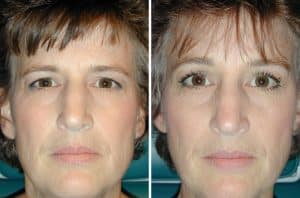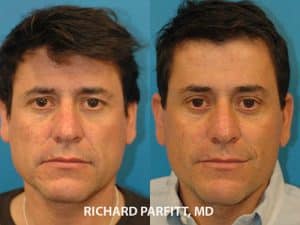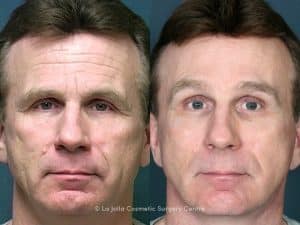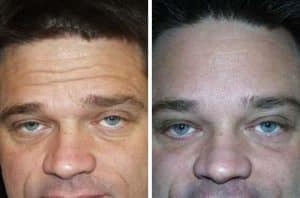A forehead lift, also known as a browlift or browplasty, is a plastic surgery procedure that is used to elevate a drooping eyebrow and to eliminate forehead creases and worry lines.
Reasons for Forehead Lift
Aging is an inevitable process and often, the brow and forehead area are the first to show the signs. As a result, the skin begins to lose its elasticity resulting in fallen eyebrows, wrinkling across the forehead and frownlines.
A forehead lift procedure is carried to reverse such effects on the eyebrows and forehead. The procedure may be done with other plastic surgery procedure such as such as a facelift, eyelid surgery, or nose reshaping for optimal results.
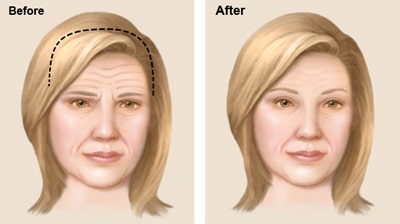
Surgical Procedure for Forehead Lift
The patient is given a local or general anesthesia depending on surgeon’s preferences to reduce pain. The procedure is usually carried out using minimally invasive techniques known as endoscopic surgery. This involves the use of an endoscope (a thin tube with a camera on the end) to make three to five small incisions within the hairline. This allows the tissue and muscle beneath the skin to be adjusted, correcting the source of visible creases while leaving very minimal scars. Endoscopic brow lift when done typically takes about 45 minutes. Other surgical techniques used for a forehead lift are coronal lift and hairline brow lift.
Forehead Lift Surgery Risks and Complications
Specific risks associated with forehead lift procedure include:
1. Nerve Damage: it is possible for the surgical process to damage the nerves that control eyebrow and forehead movements.
2. Hair Loss: Hair loss can also occur along the scar edges in the scalp when an incision is made through the hairline.
3. Uneven eyebrows. A forehead lift can result in asymmetry, with one or both of the eyebrows appearing too high. However, asymmetry may even out during the healing process. Persistent brow shape or position problems can be treated through additional surgery.
Other general risks associated with any type of surgery such as anesthetic risk, bleeding, infection, wound healing problems and unfavorable scars are all still possible.
Since the advent of the hugely popular wrinkle remover, Botox, many patients have given preferences to Botox injections every four to six months to get the same results.
Forehead Lift Recovery
Initial wound healing may take 10 to 14 days. Sutures or clips will be removed when it is appropriate. You should be ready to return to work and normal activity after 10-14 days. Cosmetics can help camouflage any bruising.
Even though you will look presentable to the public, you will find that the healing will continue for several weeks, as the swelling dissipates and incision lines refine and fade. It may take several months for your complete recovery.
Following your physician’s instructions is essential to the success of your surgery.
It’s important that the surgical incisions are not subjected to excessive force, swelling, abrasion or motion during the time of healing. Your doctor will give you specific instructions on how to care for yourself.
Forehead Lift Pictures
Find attached soem pictures from forehead lift recovery.
- forehead lift recovery pictures
Forehead Lift Cost
The total cost for a forehead lift depends on a lot of factors such as the anesthetic fee, private hospital fee, private operating facility fee, extent of surgery required. The average cost of a forehead lift is $3,623, according to 2018 statistics from the American Society of Plastic Surgeons.
Read More: Scalenectomy
